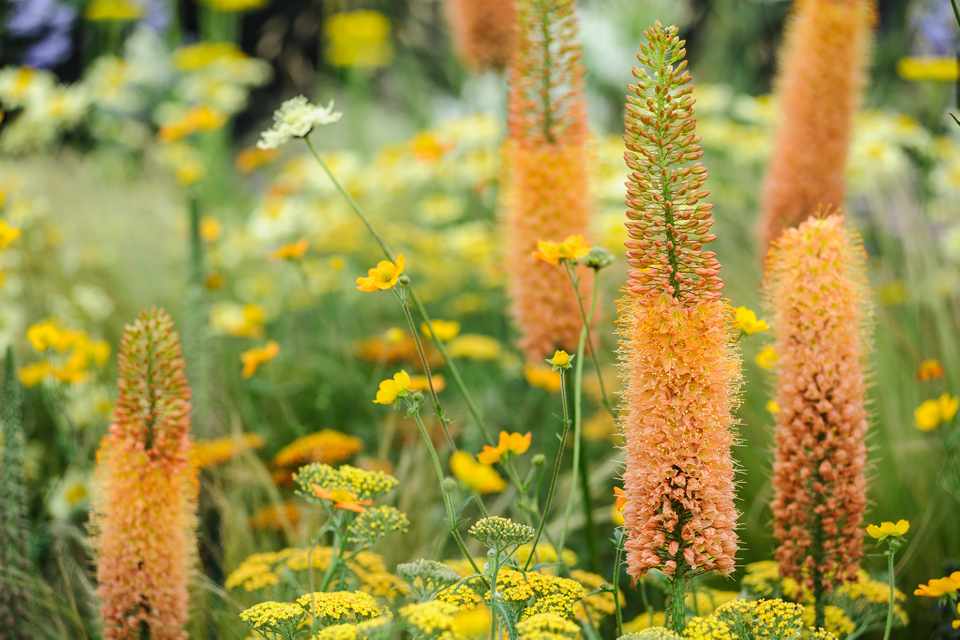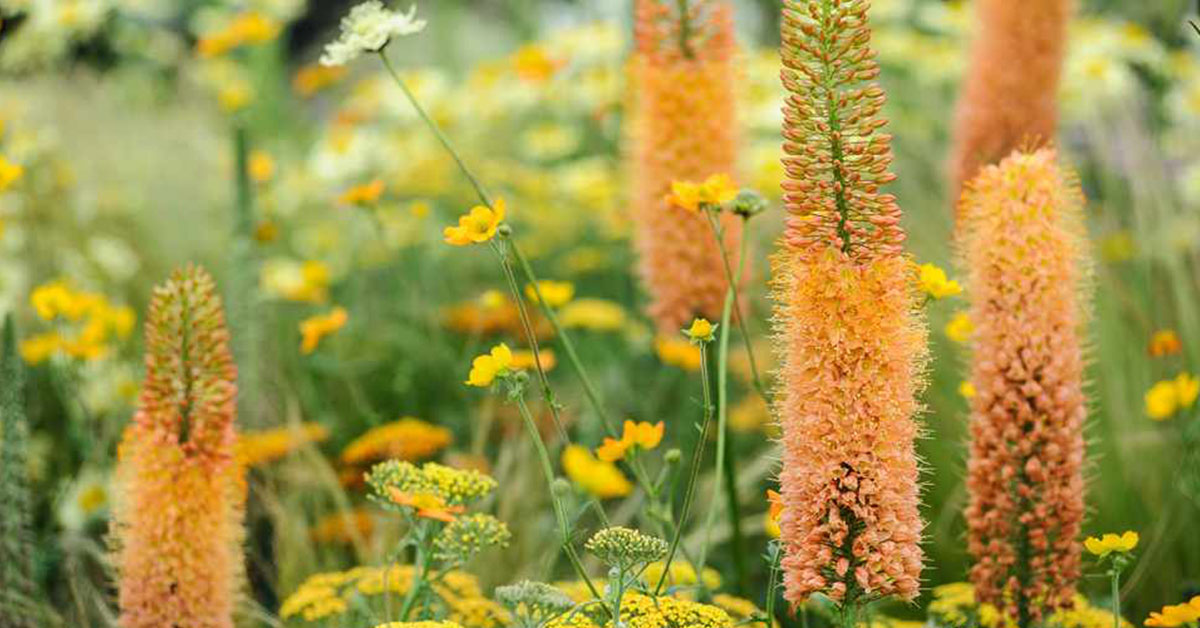Eremurus, often known as Desert Candle, are tall, regal perennials with thick, starfish-like roots that will give herbaceous borders height and flair. About forty species of plants belonging to the genus Eremurus are endemic to central Asia, and they are most common in rocky terrain at high altitudes. If you want the appearance of foxtail lilies in the dark, plant the bugbane flower because they require a lot of sunlight.
What Is Desert Candle?
The foxtail lily is a striking example of how a modest bulb may develop into a magnificent plant a few months later. Depending on the type, you can produce spires of closely packed flowers as tall as 6 feet tall from a single spidery, woody tuber.
Here are some brief facts about this popular plant:
- Latin name: Eremurus sp.
- Other names: Desert candle, foxtail lily
- Native to: Central Asia
- Invasiveness: No
- Tenderness: Deciduous Perennial
- Sun: Full Sun
- Water: Average needs
- Soil: Sandy loam
- Hardiness zone: Zones 5 through 8
- When to plant: Fall
- Spacing: 1-3ft
- Plant height: 3-6 ft
- Bloom period: Late spring, early summer
- Time to maturity: 1-2 years
- Container friendly: No
- Fertilizer: liquid fertilizer or liquid manure
- Toxicity: Toxic to pets and humans
- Deer resistant: Yes
- Pest resistant: Yes
The sparse, spiky foliage of Desert Candles might start to wane even before the flowers appear. Warm hues of yellow, orange, pink, and coral make up the bottlebrush-shaped blooms that bloom in the late spring and open from the base of the spike to the top.
Avoid crowding your Desert Candles with additional plants that will cover their wilting foliage; Eremurus like to have their own space in the garden.
Water
Desert Candles require an average amount of water, therefore during the growing season, water frequently and prevent the soil from drying out.
Sunlight
The full sun is necessary for Desert Candles. Even while they can tolerate some shade, the more shade there is, the less ability your lilies will have to develop sturdy stems to hold their lovely blossoms.
Soil
Desert Candles require the proper soil tilth because heavy soil is the main cause of the plants’ failure in gardens. Desert Candles require well-draining soil. Clay soil is preferable to soil that is more on the sandy side.
Plant your Desert Candles in raised beds if your garden is made of dense clay. Eremurus are native to the semi-desert and dry grasslands of western and central Asia.
Fertilizing
Once in active growth, fertilize in the spring with a high potassium fertilizer like sulfate of potash.
Consider liquid feeding once a month in spring and summer with a general fertilizer if plants are weak or have been injured by a late frost.

Invasiveness
Since it is grown in a controlled geographic area with plenty of sunlight, water, and nutrients, as well as regular trimming and maintenance, and, of course, healthy pollinators, the Candle desert is not invasive.
Growing Desert Candle In Containers
Early spring or summer are the best times to purchase bare root crowns. As soon as you can after buying, plant. Prior to planting, immerse the roots in water for a couple of hours if they look to be dry. Avoid touching the fragile roots at all costs.
Incorporate organic material, such as garden compost, to prepare the area. Consider elevating the soil level of the planting bed if the soil is heavy to help with drainage.
Make a shallow sowing hole that is wider than the roots and 15-20cm (6-8in) deep. Place the center of the crown so that the central growth point is slightly below the soil surface on a pile of coarse gravel, sharp sand, or dirt.
Care & Tips
Instead of bulbs, foxtail lily tubers are chunks of the dormant root. The tubers appear dry and a little brittle when you first obtain them. When you expose the dormant plants to moist soil, they will swell up, but be careful not to break any of the pieces in the interim. For your Desert Candles, pick a location that is protected from severe winds. When winter hits, you must figuratively tuck your Desert Candles in with a blanket in the cooler zones, notably zone 5. Compost, straw, or mulch are some examples of loose organic materials that should make up the blanket.
Common Problems
The growing environment is typically to blame for poor growth and a lack of flowering. It’s critical to plant in full sun and on well-drained soils. Do not allow other plants to compete with their roots or suffocate their foliage. Crowns that seem dried out shouldn’t be purchased because they might not last well. Frost, slugs, and snails, which harm the new growth, will weaken the plant. If a late frost is predicted, cover fresh shoots with fleece. To encourage growth, liquid-feed injured plants with general fertilizer. If the plant doesn’t grow the next year, it is probably because the soil is too wet or because soil disturbance caused root injury.
Propagating Desert Candle
In the fall, start new seedlings; older seed’s germination is likely to be unpredictable. Alternately, plant seed that has been preserved in early spring or summer. When seedlings are big enough to handle, pot them up individually. At the conclusion of their second or third year, plant in the final position. It will take 3-5 years for plants grown from seeds to bloom.
As soon as the leaves have gone down and flowering is over, mature eremurus clumps can be divided. The delicate fleshy roots should be handled with care.
Wildlife Attracted By Desert Candle
Eremurus holds clumps of spine-like, green leaves, followed by barbs of pale pink flowers, which emerge as the leafage starts to die down. It’s extremely attractive to bees and other pollinators like hummingbirds.
The History Of Desert Candle
The plant, which is well-liked in gardens, was brought from Central Asia to Europe and North America in 1874. The shrub may be too tall for some people’s typical gardens, though.
This plant has earned the Royal Horticultural Society’s Award of Garden Merit for growing in the UK.
Uses For Desert Candle
Desert Candle has been used as an ornamental and garden plant. Both inside and beyond its natural range, it has been grown for aesthetic reasons. Desert Candles, which bloom at the same time as peonies or a cluster of Dutch iris flowers, look stunning next to them.
Eremurus is a representation of tenacity. The foxtail lily is a superb cut flower specimen, so be sure to purchase enough of these quickly expanding stems so that you won’t mind plucking some for the vase.













